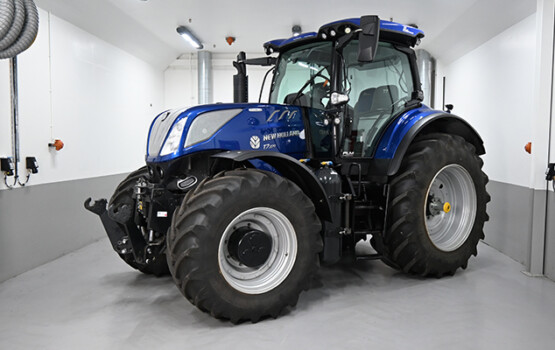Portal for more climate-friendly mobility
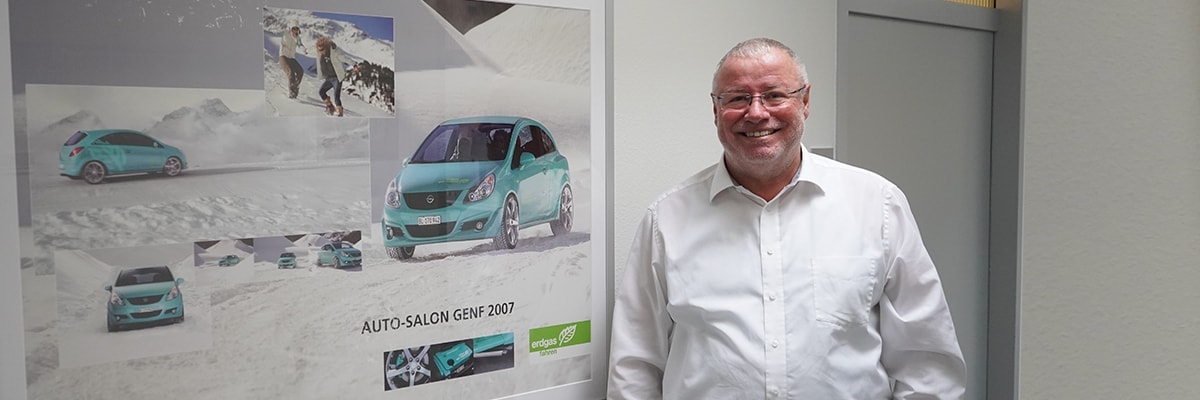
Full throttle with Rinspeed
Hans Wach was managing director of Gasverbund Mittelland AG for more than 20 years. The pioneering CNG mobility promoter has now retired.
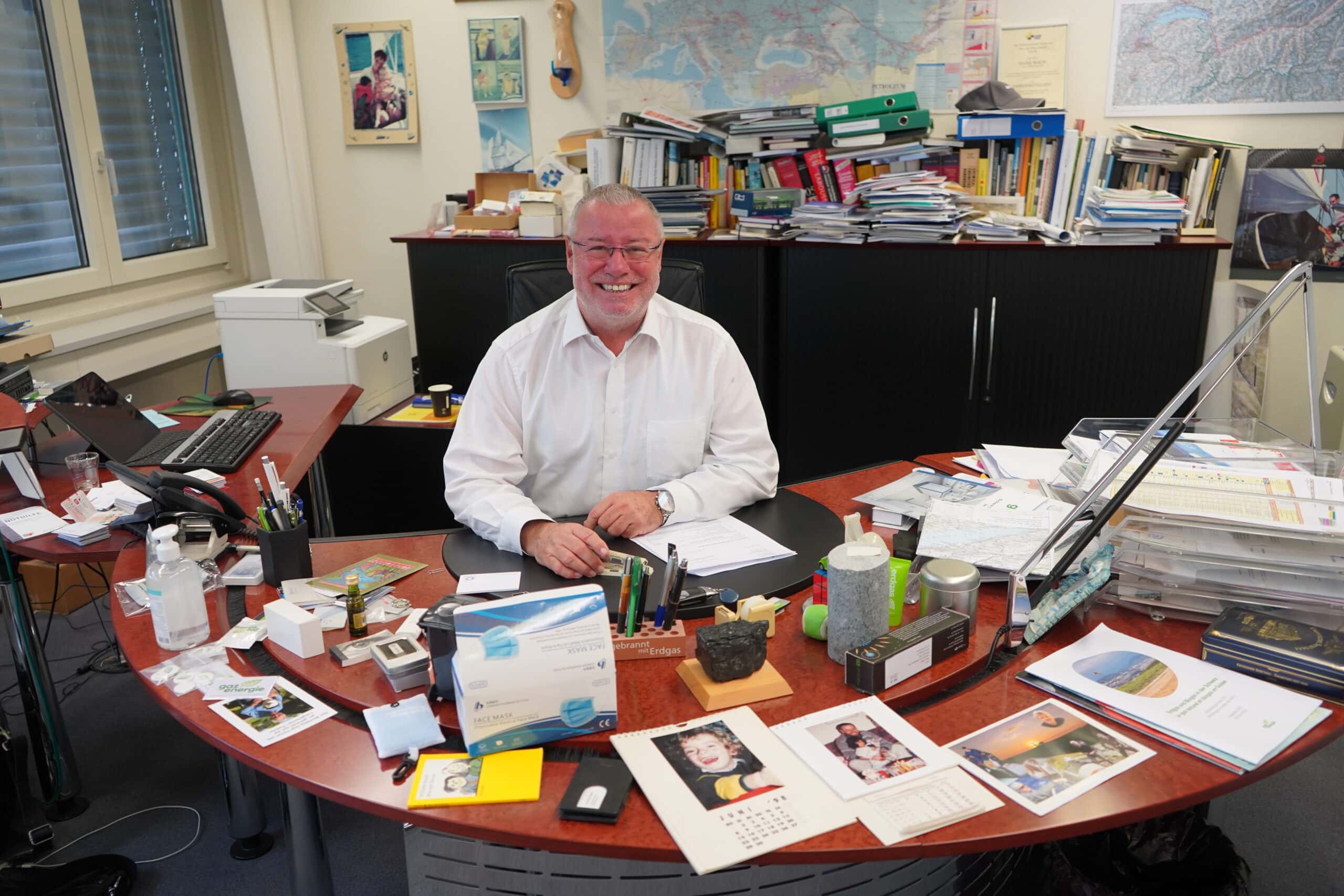 CNG mobility promoter Hans Wach in his office. Source: CNG-Mobility.ch
CNG mobility promoter Hans Wach in his office. Source: CNG-Mobility.ch
On the wall of the corner office in Arlesheim (Canton of Basel Landschaft) are maps of the most important gas pipelines in Europe and Switzerland. Folders, documents, various memorabilia and family photos are stacked up on his desk and cupboards. They make it clear that Hans Wach felt at home here. After more than 20 years as managing director of Gasverbund Mittelland AG, he is now retiring. A good enough reason for CNG-Mobility.ch to take a look back but also look to the future with the pioneering CNG mobility promoter.
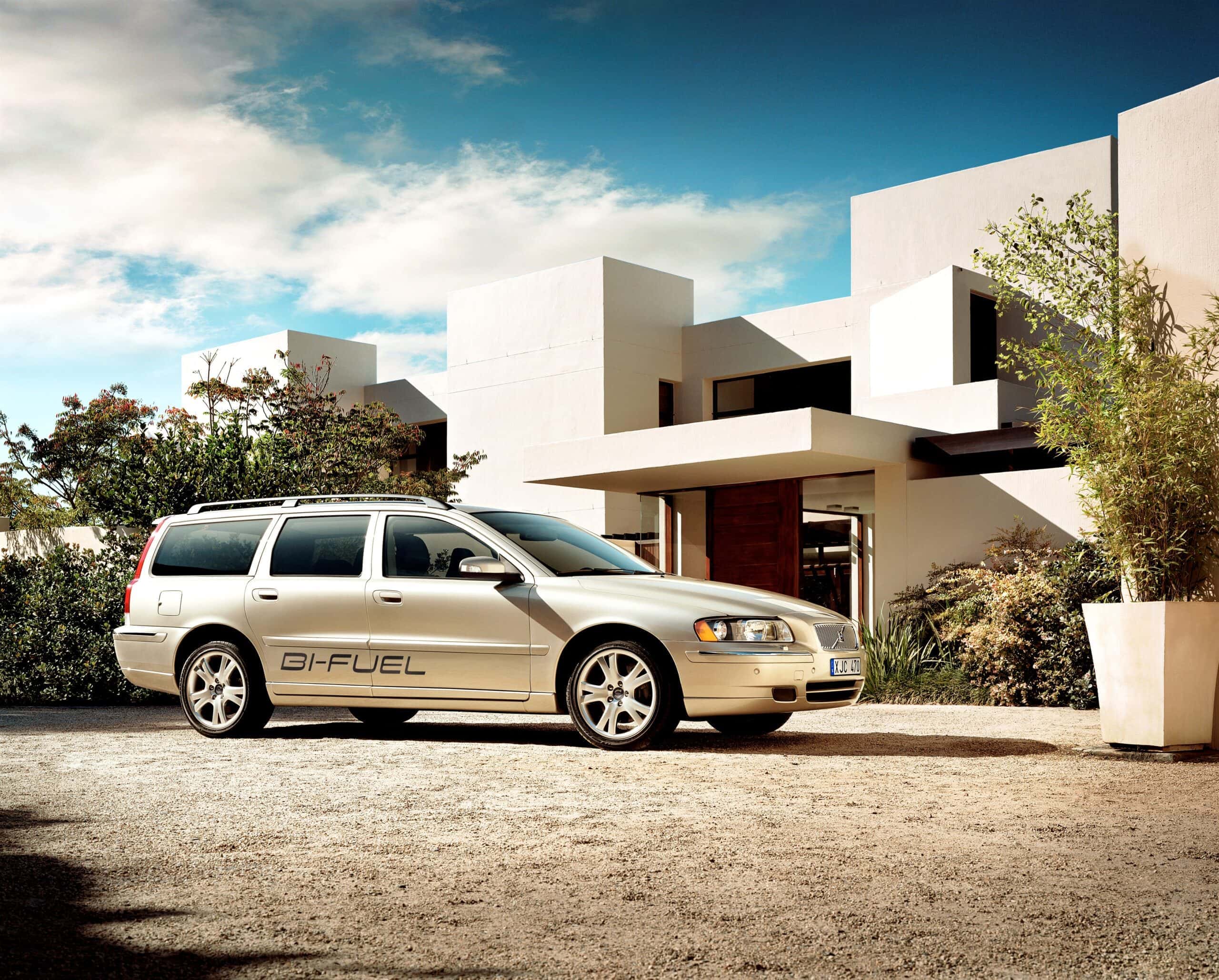 The Volvo V70 Bi-Fuel was one of the first manufacturer vehicles available in Switzerland with CNG drive. Source: Volvo
The Volvo V70 Bi-Fuel was one of the first manufacturer vehicles available in Switzerland with CNG drive. Source: Volvo
“At the turn of the millennium, there were almost no CNG-powered vehicles,” recalls Hans Wach in an exclusive interview with CNG-Mobility.ch. “Volvo was one of the first brands to offer a CNG model, the V70 Bi-Fuel. The estate car was definitely not a big hit in terms of performance. It was simply a petrol engine – still without turbo – that was converted for use with CNG. It was a factory-based solution. All other CNG cars were rebuilt.” The second car manufactured with a CNG engine under the bonnet was the Fiat Multipla SX Bipower in 2002. “Although the Fiat didn’t win a beauty prize, it was technically a very clever vehicle, albeit with limited engine power,” says Wach.
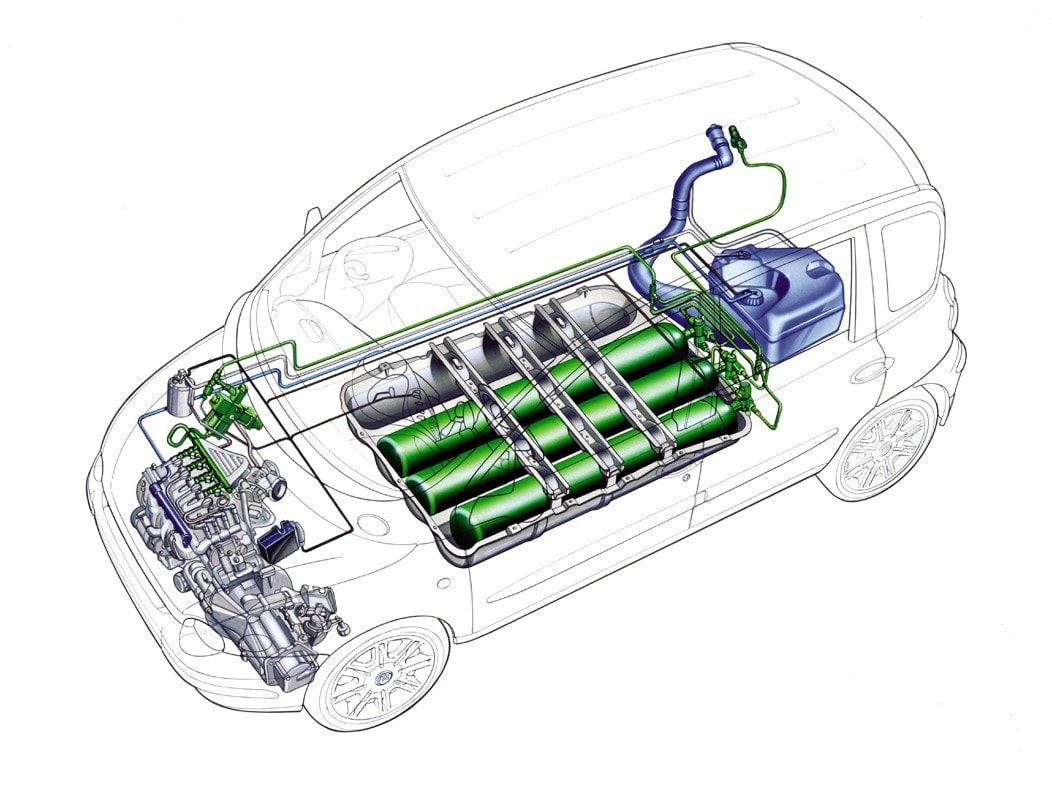
The Fiat Multipla drove up with a so-called “mother-in-law seat” as a third seat in the first row and, of course, CNG drive. Source: Fiat.
“This coincided with the campaign of the Migros Zurich Cooperative under the slogan ,” he continues. From 2001 onwards, Migros became the first company in Switzerland to convert food waste, unsold vegetables and cut flowers into climate-friendly fuel. From the 4,000 tonnes of organic waste every year, enough biogas was produced to replace 280,000 litres of petrol. “At that time, a biogas plant was built and the fuel was also used for 11 biogas trucks,” explains the long-time GMV boss looking back. “Migros Basel is currently implementing the same principle.”

Source: Migros
At Gasverbund Mittelland AG (GVM), Kurt Schmidlin, who has also recently retired, made a strong case for promoting climate-friendly CNG mobility. “When I joined GVM, I asked Kurt and the management whether driving with CNG was actually a hobby or a marketing gag, or whether we really wanted to turn it into a business case,” explains Hans Wach. The decision was made in favour of the latter. The first step thereafter was the GMV decision to purchase company vehicles with a CNG engine whenever possible. “By the way, this principle still applies.” The workforce grumbled a bit about this new policy at first, as CNG vehicles were primarily characterised by their ecological aspects and not by their dynamism.
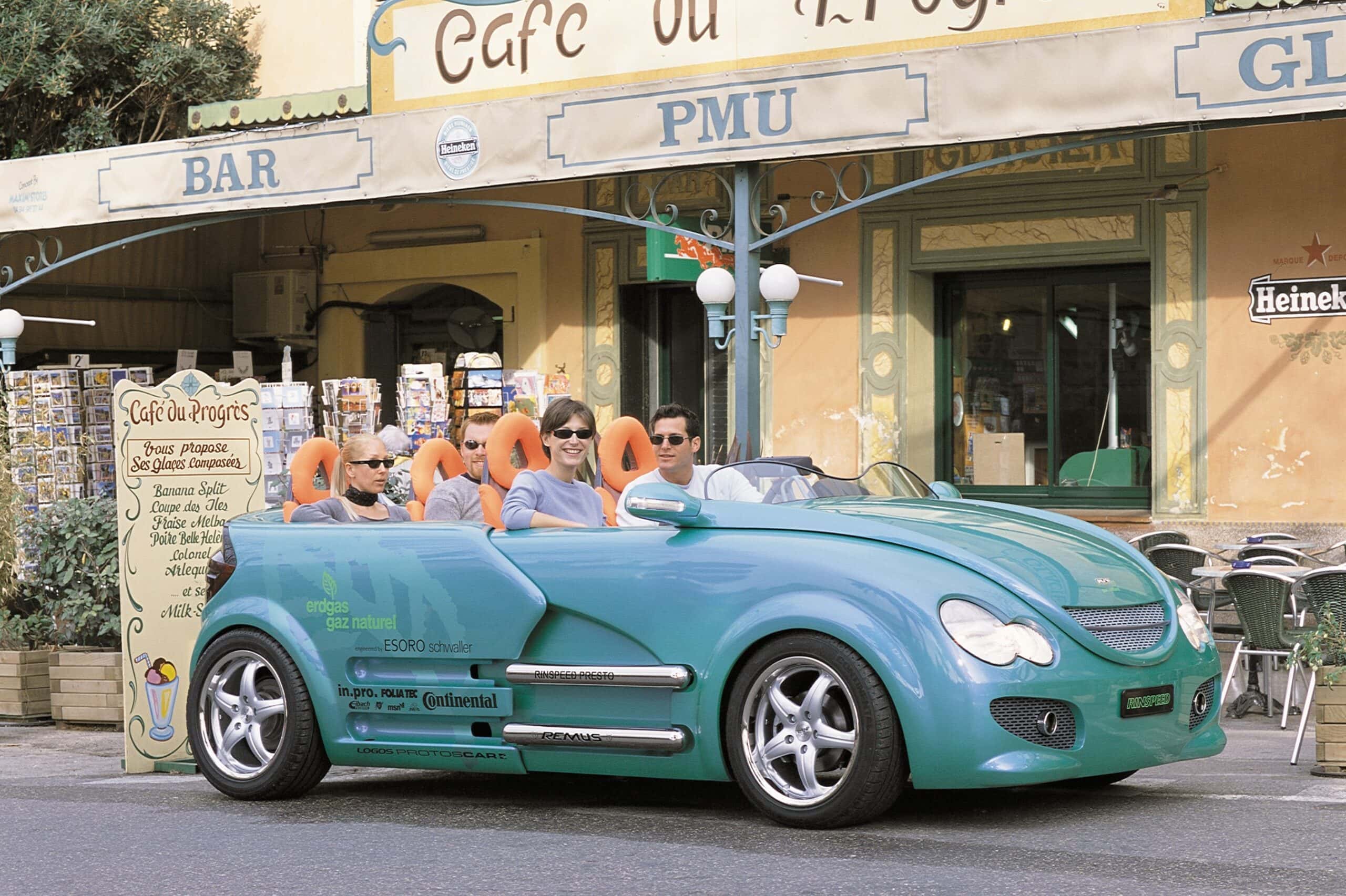 Thanks to biogas in the tank, the Rinspeed Presto was not only CO2-neutral, but could also be expanded from a two-seater to a four-seater. Source: Rinspeed
Thanks to biogas in the tank, the Rinspeed Presto was not only CO2-neutral, but could also be expanded from a two-seater to a four-seater. Source: Rinspeed
The next important step for Swiss CNG mobility was the cooperation with Frank M. Rinderknecht, the Swiss automotive visionary and founder of Rinspeed. “The project had a rather hefty budget. As the new GVM Managing Director, I therefore almost did not dare to put it to the Board of Directors. We didn’t deal with it in the meeting itself, but rather afterwards at lunch,” remembers Wach. The then Chairman of the GVM Board of Directors found the idea so ingenious that the Board of Directors decided over lunch to take part in the Geneva International Motor Show with Rinspeed. In 2002, the company presented the Rinspeed Presto, a vehicle that could be expanded from two to four seats and ran on biogas thanks to the CNG engine. As a result, the GVM suddenly entered the international car spotlight and continued to present itself with spectacular Rinspeed concept cars at the Geneva International Motor Show in the following years.
“The appearance caused an outcry within the gas industry,” explains Hans Wach. “The critics accused us of being dubious, because we were allegedly generating sex appeal with show cars, but actually there were no real cars with a CNG engine for the public to view.” The GVM boss smiles and adds: “We told the critics that GVM would be back in Geneva the following year, but that they would also have the option of taking part.” The individual exponents of the Swiss gas industry finally came together and it was agreed in November 2002 to found gasmobil AG and thus jointly give CNG mobility in Switzerland a further boost.
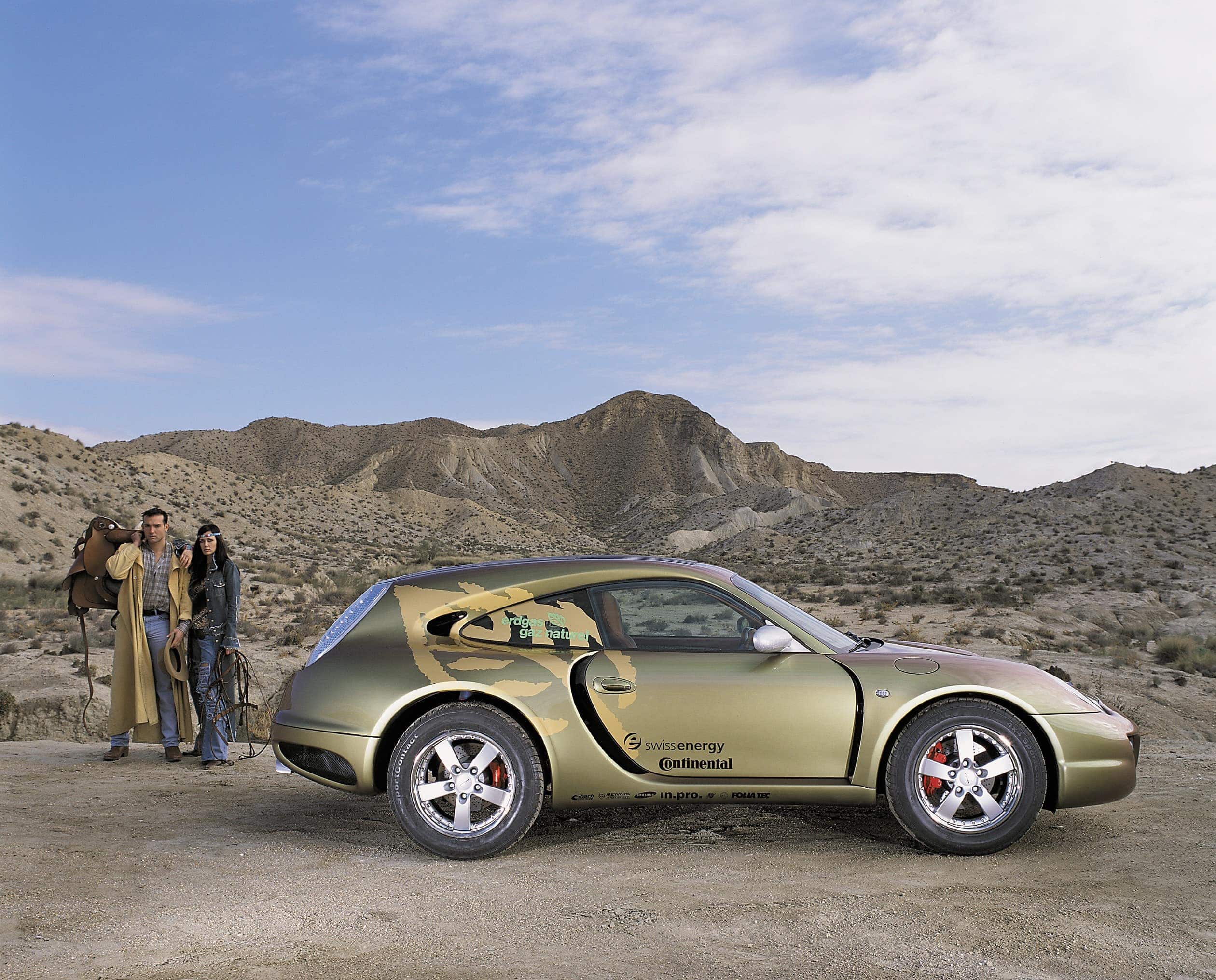 The Rinspeed Bedouin was also a CNG-powered study by Swiss car visionary Frank M. Rinderknecht. Source: Rinspeed
The Rinspeed Bedouin was also a CNG-powered study by Swiss car visionary Frank M. Rinderknecht. Source: Rinspeed
After its first financial year, gasmobil AG already made a very positive assessment : the number of CNG vehicles across Switzerland had almost doubled to 730. The number of CNG filling stations also increased from 25 to 35. The coordinated production of CNG and biogas had an impact, and cooperation with the two industry associations, the Swiss Gas Industry Association (VSG) and the Swiss Gas and Water Industry Association (SGWA), as well as regional and local gas suppliers, has enabled a great deal to be achieved. A framework agreement was also concluded with biogas producers, in order to regulate market access via the gas network under clearly defined conditions.
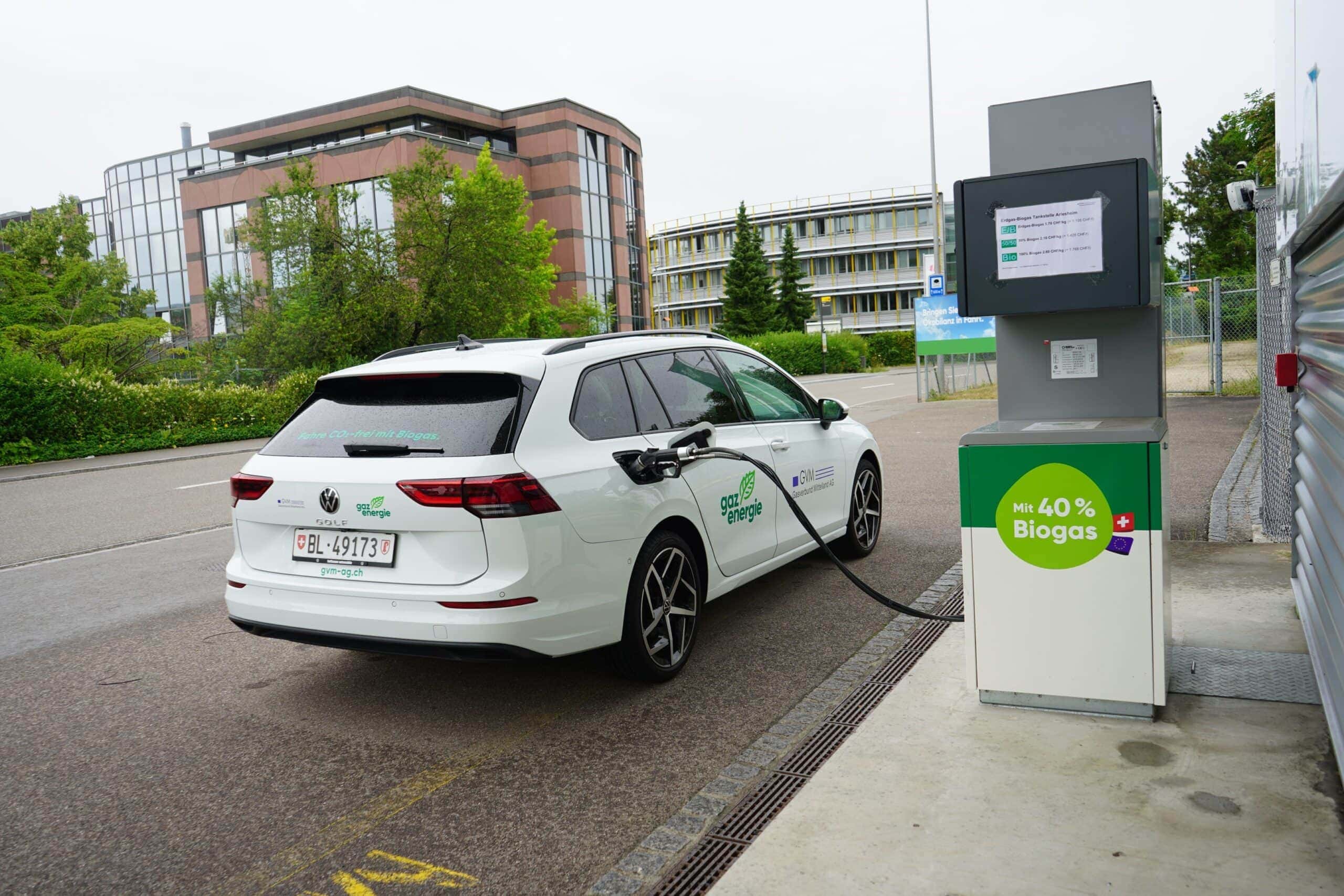 One of now more than 150 CNG filling stations throughout Switzerland. Source: CNG-Mobility.ch
One of now more than 150 CNG filling stations throughout Switzerland. Source: CNG-Mobility.ch
“Of course, the most important aspect was the construction of filling stations. After all, it was clear to us that there would be no vehicle development without a filling station network,” says Wach. A motion was unanimously passed by both chambers of parliament in 2004 to reduce the fuel tax on CNG and introduce a tax exemption on biogas for 10 years each. “The roadmap presented by the Directorate General of Customs envisaged that the legislative amendments would enter into force in early 2007,” explains the CNG promoter. “At the same time, we pledged on the part of the gas industry to build up a nationwide network of around 100 CNG filling stations by then. Back then, things were happening at a rapid pace.”
The topic of CNG mobility gained momentum and the number of vehicle models also rose continuously. Volvo, Opel, Fiat, VW and Citroën offered passenger cars with CNG engines, and light and heavy commercial vehicles from Iveco, Mercedes, MAN, Fiat and Citroën also enriched the range. “In addition, the first CNG models with turbo engines appeared, which offered more driving enjoyment,” explains Hans Wach. “Then we worked with the VW development department in Wolfsburg on a CNG variant of a twin-charged 1.4-litre TSI engine for the Geneva Motor Show. VW got wind of us wanting to introduce a gas version of their engine innovation together with their subsidiary and some clever CNG technicians, stepped in and said that this was not possible.”
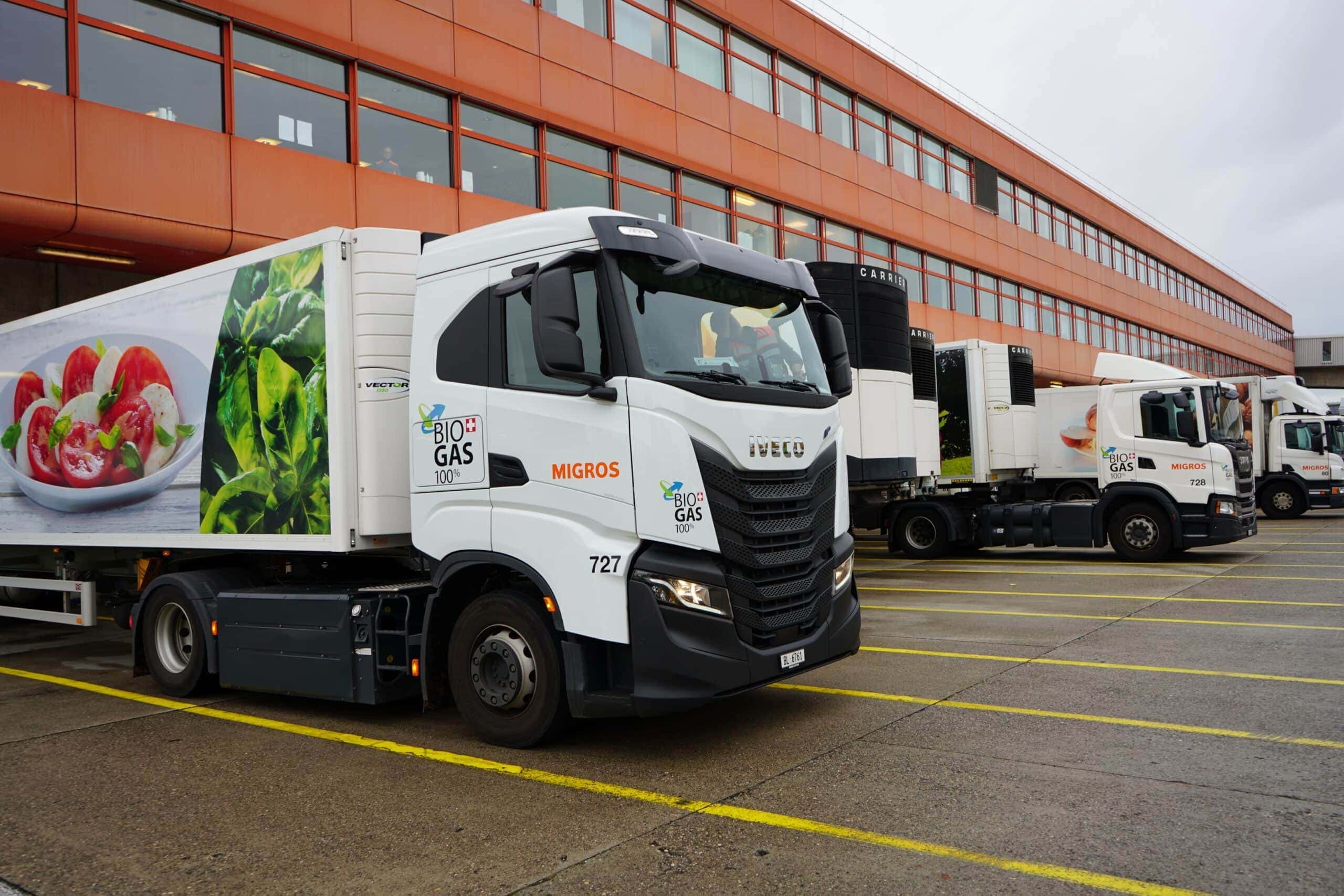 The range of CNG-powered models for light commercial vehicles and trucks has also been gradually increased. Source: CNG-Mobility.ch
The range of CNG-powered models for light commercial vehicles and trucks has also been gradually increased. Source: CNG-Mobility.ch
This caused quite a stir in the global corporation, but GVM had binding agreements with the VW subsidiary. The compromise: The VW Touran with a CNG engine, which had also been given a bit of a makeover by Rinspeed, had to return to Wolfsburg before the trade fair, where it was given a major overhaul before its premiere in Geneva. “We were even able to showcase the world premiere at our Gasmobil stand – that was amazing,” remembers Wach. “Although there were many good technical developments relating to the CNG engine, the VW Group unfortunately never really warmed to the technology. As a Swiss importer, Amag has also rather neglected the issue. That was our dilemma, which is why we stopped with a stock of around 14,000 CNG vehicles in Switzerland. After all, the new cars manufactured were sufficient to replace the vehicles that were withdrawn from service due to their age.”
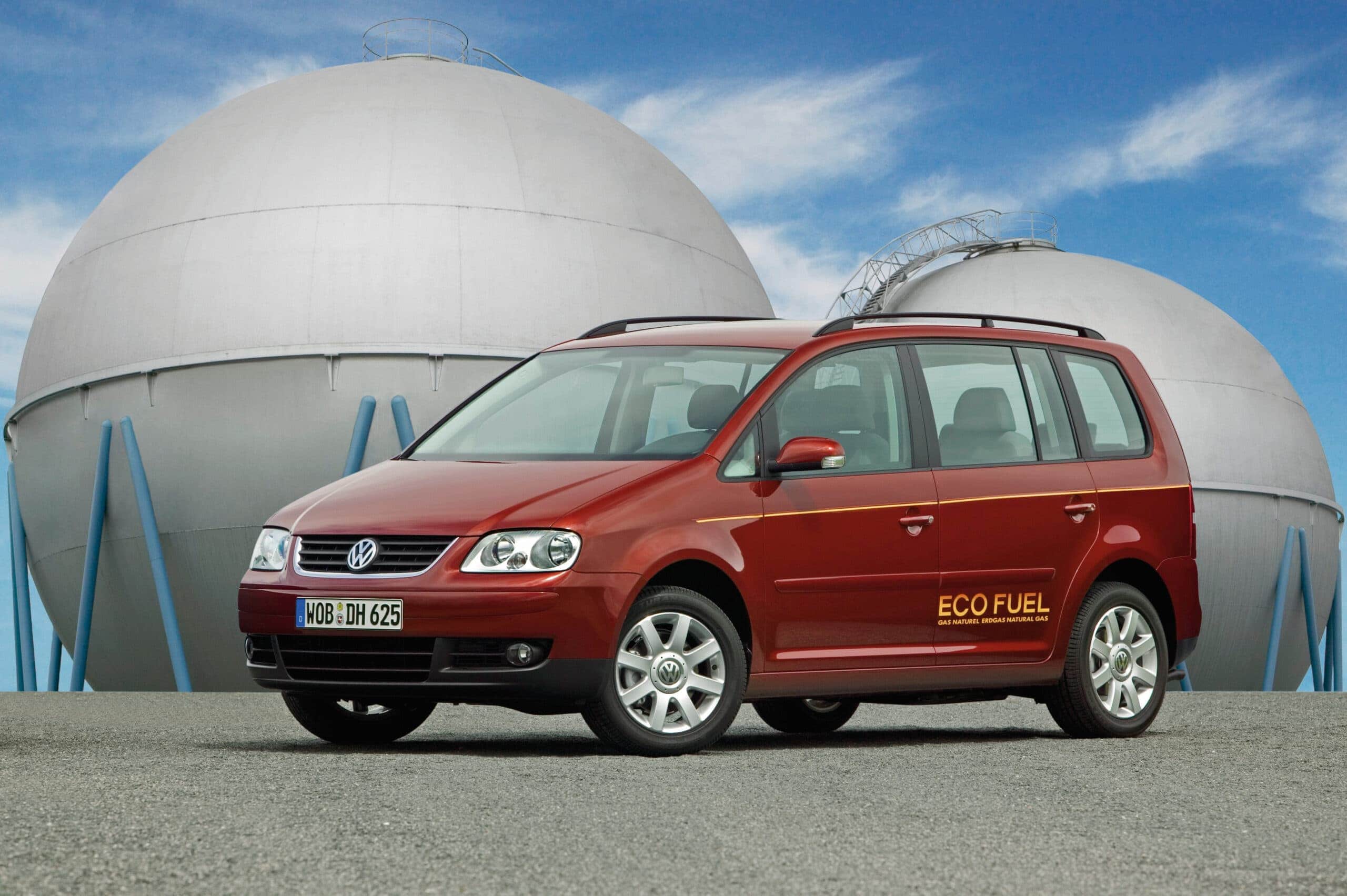 Several hundred orders for VW’s Touran EcoFuel with CNG drive were received within a few weeks in 2006. Source: Volkswagen
Several hundred orders for VW’s Touran EcoFuel with CNG drive were received within a few weeks in 2006. Source: Volkswagen
The business case never really got off the ground, even though Empa was also a major advocate of CNG mobility and even worked on a CNG hybrid vehicle together with VW Group Research. “The innovative solutions had been fully developed, but the Marketing department at the VW Group, which determines what gets the green light, always rejected these proposals,” says the outgoing GVM boss with clear regret in his voice.
A further boost for CNG mobility in around 2015 was thwarted mainly by the lack of particularly light composite tanks and delivery difficulties. “The 10,000 vehicles planned for the whole of Europe at the time sold out in a jiffy,” says Hans Wach. Despite all the obstacles that have been put in the way of CNG mobility over all these years, the CNG fan still believes in the climate-friendly technology that makes it possible to operate in a virtually CO2-neutral manner thanks to biogas in the engine. That’s why the outgoing GVM boss and passionate sailor bought a new car on retirement – of course one with a CNG engine! “A Seat Leon TGI as a pension vehicle,” he explains with satisfaction. “I’m really looking forward to the car and my first ride in it.” (jas, 4 January 2022)
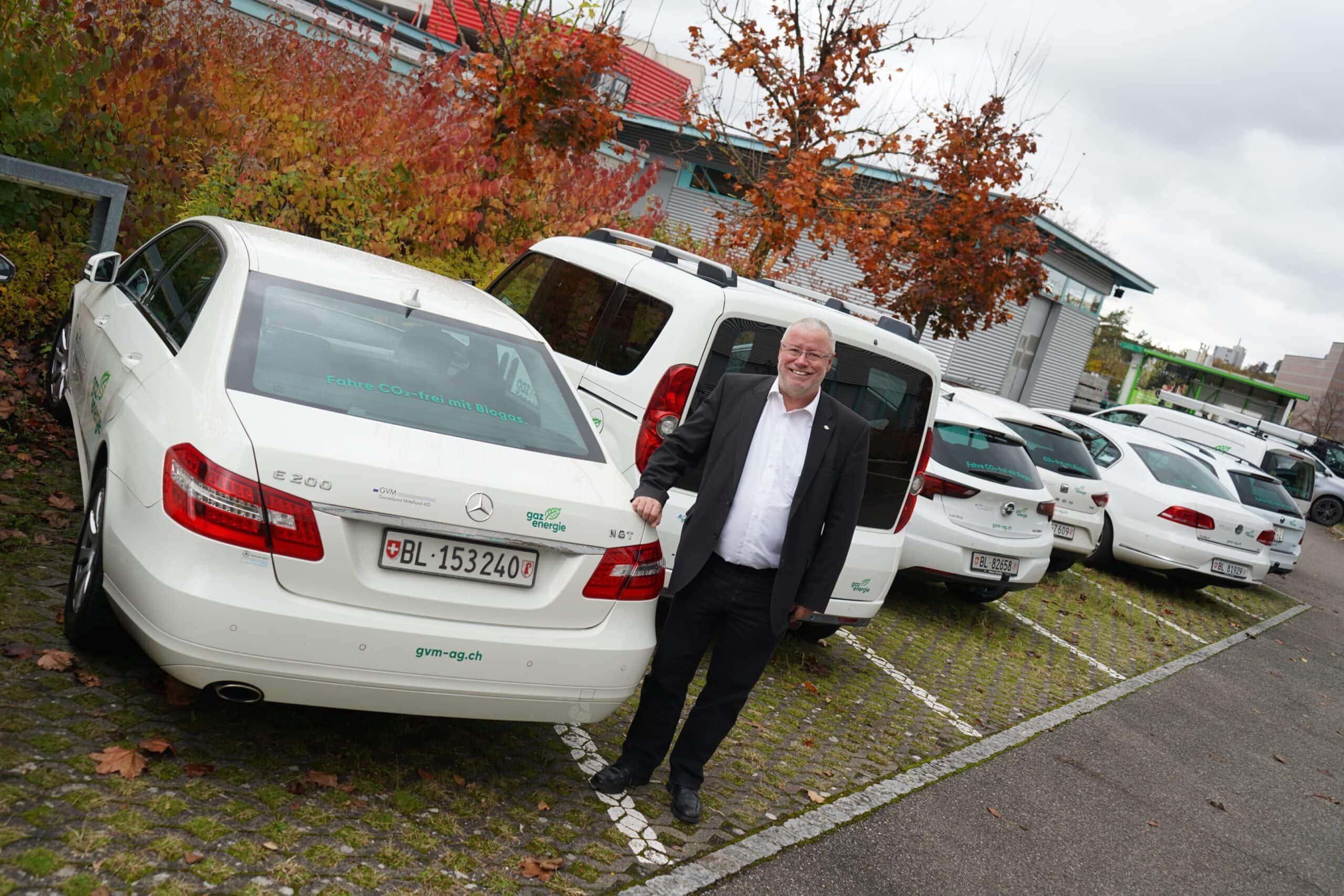 Hans Wach with part of the extensive CNG fleet of Gasverbund Mittelland AG. Source: CNG-Mobility.ch
Hans Wach with part of the extensive CNG fleet of Gasverbund Mittelland AG. Source: CNG-Mobility.ch
You might also be interested in
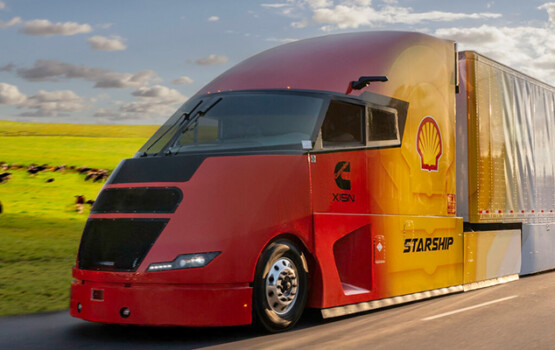
Shell Starship on record hunt
